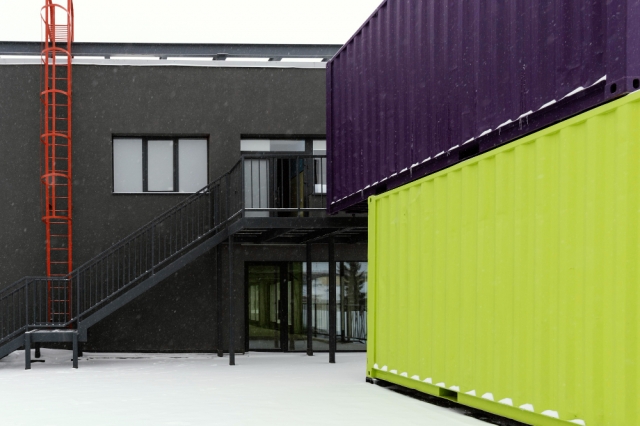Shipping containers, once solely a staple of global trade, have recently found a new lease on life as versatile building blocks for innovative architectural projects and sustainable design solutions.
With their robust construction, modular design, and portability, second-hand shipping containers offer endless possibilities for repurposing in creative and environmentally friendly ways. From eco-friendly homes to pop-up shops and art installations, here are six inspiring ways to breathe new life into these industrial relics:
1. Container Homes
One of the most popular and practical uses for second hand shipping containers is in building homes. Container homes offer a sustainable and cost-effective alternative to traditional housing, utilizing recycled materials and minimizing construction waste.
Architects and designers worldwide have embraced the challenge of transforming containers into stylish and functional living spaces.
With careful planning and thoughtful design, multiple containers can be stacked, cut, and combined to create spacious, modern homes catering to various lifestyles and preferences. From cozy tiny homes to sprawling multi-container residences, the possibilities are endless.
2. Retail Spaces and Pop-Up Shops
Shipping containers provide an ideal solution for temporary retail spaces and pop-up shops. Their modular nature and portability make them easy to transport, set up, and customize to suit the needs of different businesses and events.
Whether used as a standalone kiosk, a temporary storefront, or part of a larger retail complex, container-based retail spaces offer a unique and eye-catching alternative to traditional brick-and-mortar stores.
With creative branding and design elements, these containers can attract customers and create memorable shopping experiences in diverse locations, from urban streetscapes to outdoor festivals and markets.
3. Workshops and Studios
Artists, artisans, and entrepreneurs increasingly turn to shipping containers as affordable and versatile spaces for workshops and studios. With their durable construction and customizable interiors, containers provide a blank canvas for creative individuals to pursue their passions and hone their craft.
Whether used as a woodworking shop, a photography studio, or a maker space for artisans and creators, container workshops offer a functional and inspiring environment that can be tailored to specific needs and preferences. Proper insulation, ventilation, and lighting allow these containers to provide comfortable and productive workspaces year-round.
4. Cafés and Restaurants
The food and beverage industry has embraced the trend of container-based establishments, using shipping containers to create unique and inviting cafés, restaurants, and food stalls. Container cafés and restaurants offer a fresh and contemporary dining experience, combining industrial aesthetics with modern design elements.
Whether serving gourmet coffee, street food, or fine dining cuisine, these containers can be outfitted with commercial-grade kitchen equipment, seating areas, and service counters to accommodate customers and staff. With outdoor seating areas, rooftop decks, and vibrant signage, container-based eateries can become popular destinations and gathering spots in urban and waterfront locations.
5. Art Installations and Exhibition Spaces
Shipping containers provide a versatile platform for artists and designers to create immersive art installations and exhibition spaces. With their modular structure and weather-resistant exterior, containers can be transformed into temporary galleries, interactive installations, and site-specific artworks that engage and inspire audiences.
From large-scale sculptures to intimate multimedia experiences, container-based art projects offer a unique opportunity to repurpose industrial materials and explore sustainability, mobility, and social commentary themes. These containers can serve as dynamic platforms for artistic expression and cultural exchange, whether installed in public spaces, galleries, or festivals.
6. Community and Educational Facilities
Shipping containers can also be repurposed to serve the needs of communities and educational institutions. Whether used as classrooms, libraries, or community centers, container-based facilities offer flexible and cost-effective solutions for addressing space constraints and expanding access to essential services.
In rural areas and underserved communities, container-based schools and libraries can provide much-needed resources and support for learning and development. Additionally, containers can be retrofitted with solar panels, rainwater harvesting systems, and other sustainable technologies to minimize environmental impact and promote eco-friendly practices.
Transforming Spaces for a Sustainable Future
Second-hand shipping containers offer many creative possibilities for repurposing in diverse architectural, commercial, and artistic projects. From sustainable homes to mobile retail spaces and community facilities, containers can be transformed into functional and aesthetically pleasing structures that meet various needs and preferences.
By embracing innovative design solutions and environmentally friendly practices, individuals and organizations can harness the potential of shipping containers to create inspiring spaces that enrich lives, stimulate creativity, and contribute to a more sustainable future.






